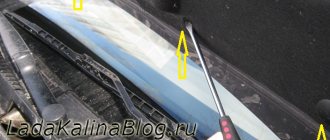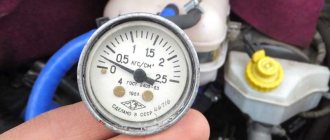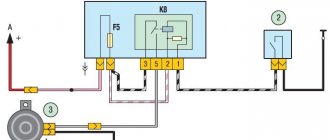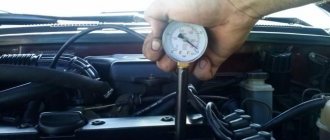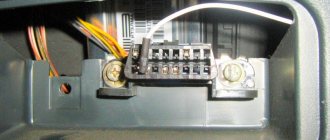washer tank
Removing the tank on a Lada Granta car takes a few minutes.
Removing the tank on a Lada Granta car takes a few minutes.
Renault specialists, apparently having well learned the experience of Napoleonic campaign of 1812, used washer tanks on all their cars built on the B0 platform, which are relatively easy to dismantle. Starting from the very first Logan and ending with the newfangled Capture, the location of the washer reservoir remains unchanged - under the windshield closer to the right side of the car. Lada Largus, as you know, is from the same family.
Important to remember
- Even if the water in the tank has thawed and is warm, you should not be zealous in warming up the entire system; the ice should also melt in the tubes and nozzles. After all, if there is ice in them, then there is a possibility that the tube will come off and the liquid will spill out, and the upholstery may be damaged.
- When pouring heated liquid and pouring over the tank from above, monitor the temperature so as not to melt or deform the plastic.
- For easier defrosting of the washer, make sure it is filled. It doesn't have to be complete. It would be better to fill it by a third, this will then contribute to faster thawing, since there will be room in it for the warm solution.
- Monitor the weather in advance and increase the concentration as the temperature drops to prevent it from freezing. It is easier to prevent than to solve the problem later.
Engine compartment of Lada Vesta
The layout of the Vesta engine compartment (pictured), just like the Ixray, also makes it relatively easy to remove the tank.
The layout of the Vesta engine compartment (pictured), just like the Ixray, also makes it relatively easy to remove the tank.
The situation is much worse for owners of cars whose washer reservoir is hidden somewhere in the cavity of the bumper. Here, if you do not want to dismantle the bumper, you will have a long and persistent struggle with ice. To reduce the procedure time, if possible, perform it in a room with a positive temperature. Before starting work, I advise you to warm up the engine.
The procedure is shown in the photographs below.
How to defrost frozen anti-freeze in a tank
Find out if the fluid in the reservoir is frozen. The algorithm is like this:
- start the car and wait for the engine to warm up to 80 degrees Celsius;
- wait until liquid sprays out of the nozzles (on average, no more than 15 minutes is enough for this);
- If the washer system does not work, then there is a high probability of freezing of the fluid in the pump and reservoir.
Running the engine may help. In some machines, it will take 2 hours to warm up in a warm room. Where there is a washer fluid heating system, the system will warm up in about 40 minutes. Ice in the windshield washer system poses more than just discomfort. The impeller and pump may fail after defrosting the antifreeze in the machine. The failure of these parts can be determined by insufficient fluid pressure. Another sign of damage may be abnormal noise when the mudguards are turned on.
Avoid freezing. Recommendations from experienced drivers:
- buy washer fluid of trusted brands from trusted sellers;
- do not add water to the washer so as not to reduce its frost-resistant properties;
- install a heating system in the car (its installation is possible on most cars).
Most car enthusiasts can create a heating system on their own, but we recommend contacting a specialized car service center.
The antifreeze in the washer reservoir is frozen. What to do? Tips in case the washer fluid is frozen:
- place the car in a heated place and wait for it to thaw (about three hours);
- there is no time - remove the tank and place it in a warm place. Use a hairdryer for this purpose, then it will take 20 minutes to warm up. This method is not effective for all brands - in some cars it is extremely difficult to dismantle the tank;
- Taking your car to a car wash for a full cycle is an effective way to deal with ice in the washer fluid reservoir. Please note that after washing there is a risk of freezing locks and doors.
If it is not possible to remove the tank and there is no time to wait, then there is a “folk” method for thawing the anti-freeze:
- buy a bottle of vodka;
- heat the engine to 80 degrees Celsius;
- turn off the engine;
- pour vodka into the tank (alcohol melts the ice);
- close the hood and start the engine again.
Instead of vodka, you can take low-temperature washer fluid, heat it to 40 degrees Celsius and pour it into the tank.
In order to use the “topping up” methods, keep the washer system reservoir at least one third empty.
Homemade siphon
You can start the siphon (create the required vacuum) using either a large medical bulb or a device from any sprayer shown in the photo.
You can start the siphon (create the required vacuum) using either a large medical bulb or a device from any sprayer shown in the photo.
Having completed all the above operations, refill the heated antifreeze liquid. We repeat the procedure as many times as necessary to completely defrost the tank. Try not to turn off the engine, but be careful not to be poisoned by exhaust gases. That is, in a confined space - a small garage, for example - the engine should not run.
Next, you should take care of the windshield washer pipes and nozzles. If you used engine compartment heating, the hot air will warm these parts and components. You can also use a household hairdryer, but after defrosting the tank, you can immediately spray them with high-quality anti-freeze. And frozen injectors can be saved with a glass and lock defroster. Better warm, brought from home.
In conclusion, I would like to remind you that it is easier to prevent a disease than to treat it. I wish you a clear road and an excellent view!
What to do if the washer is frozen?
What to do if the water in the washer fluid reservoir is frozen?
Driving in slush and other bad weather with windshield washers not functioning normally is not only problematic, but also prohibited by traffic regulations. For such a drive, state traffic inspectors will easily issue a bribe of 500 rubles, and this is at least several bottles of anti-freeze.
The situation is unpleasant, but absolutely solvable. But, alas, it won’t be possible to instantly defrost the water. You should remain calm, be patient and take action.
Precautionary measures
If you have not prepared for the cold season in advance and have not drained the water, then when the first night frosts occur, you should carefully check the car for the functionality of the windshield washer system.
When faced with a snag, you must immediately recognize the problem and stop pressing the washer supply lever to the windshield. Otherwise, a burnt-out electric motor of the washer structure may be added to the frozen liquid.
The easiest way is to wait for a thaw, but there are other ways out.
What to do if the washer is frozen?Crazy ways to defrost a tank
These options for defrosting the tank are presented on the Internet. But in practice they have proven to be ineffective and are not recommended.
Defrosting using a sprayer at the sink
Some car enthusiasts try to defrost using a gun in a car wash connected to warm water. This method is harshly criticized by experts.
Since the same amount of water will go in from the tank as it comes out. And if the ice tank is full, defrosting will not occur at all, even in small volumes.
In addition, you can pour a large amount of water into fuses, batteries and other mechanisms. In this case, your car will need serious repairs and replacement of expensive units.
Defrosting with glass cleaner
Various glass cleaning liquids, such as Mr. Muscle and others, are unlikely to be suitable for defrosting an ice crust. Since the composition of this product is absolutely not intended for this task and will not be able to enter into the desired chemical reaction with ice.
If you pour a certain amount of glass preparation into the tank, the liquid will stand on top of the ice without any changes. You will simply waste time to no avail and incur financial costs on such detergents.
Infusion of warm water in the cold
This procedure may be especially ineffective at low air temperatures. When you pour in warm water, there will initially be a slight effect in the form of melting and crispy ice. But then, all the poured water will begin to turn into new ice, only making the situation worse.
The process works when the melted water is pumped out immediately after kindling. Completely and quickly pump out the entire tank, and then fill it with high-quality anti-freeze. Then the procedure with warm water will make sense.
Adding salt to the tank
This method does not work, since the salt will simply make small depressions in the surface of the ice crust. But all the ice remains standing in its place without moving. Regardless of the amount of salt, the tank will remain frozen.
Prevention
In preparation for the winter season, you should fill in the “anti-freeze”, replacing the water not only in the tank, but also in the lines and nozzles. It is recommended to carry out the procedure in advance, even before the onset of frost. At the beginning of winter, it is permissible to use diluted antifreeze liquid, but then you should switch to a composition that can withstand frosts down to -30°C.
When buying an “anti-freeze”, you should remember that cheap liquids often do not correspond to the declared characteristics. The use of such a composition leads to the formation of ice jams while the vehicle is parked and when driving.
Source
